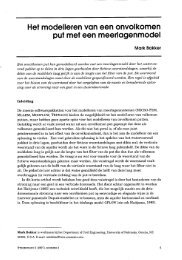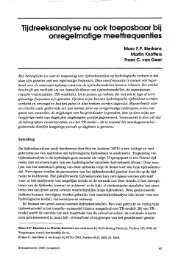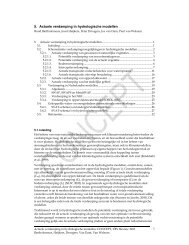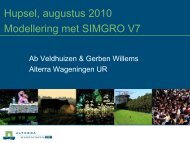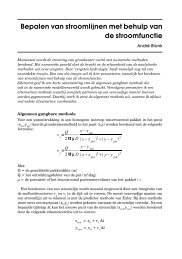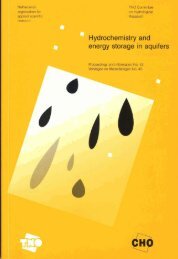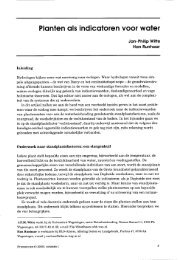PDF Viewing archiving 300 dpi - NHV.nu
PDF Viewing archiving 300 dpi - NHV.nu
PDF Viewing archiving 300 dpi - NHV.nu
Create successful ePaper yourself
Turn your PDF publications into a flip-book with our unique Google optimized e-Paper software.
where Z: Dt is the sum of the 6th power of the diameter of the particle within a unit<br />
vol<br />
of volurns. Z = Z: D; is oiian called the 'reflectivity factor'.<br />
It has been f%nd that the backscattered signal varies from one reflected pulse to the<br />
next. This is caused by movements of the particles with respect to one another. Therefore,<br />
in practice the averaged power per unit of area Wb of a <strong>nu</strong>mber of reflected pulses<br />
is detected.<br />
5. THE RADAR EQUATION<br />
Until now the averaged reflected power per unit area Wb intercepted by the antenna<br />
has been described as a function of Wo, the power per unit of area intercepted by the<br />
scattering precipitation particles.<br />
The power, Pt, transmitted by the radar set is concentrated in a narrow beam of width<br />
0. Particles at a range r along the axis of this beam will receive a power per unit of area<br />
W, , which is proportional to P,/O (see Fig. 3).<br />
Obviously, 0 -- 8' r2. So we obtain, if the radar beam is entirely filled with precipitation<br />
particles:<br />
wo - ~ ~ / t ~ ~ r ~ (6)<br />
Substituting (6) in (S), we can write:<br />
The total average power, Fr, intercepted by the antenna is equal to qt, . A,, where Ae<br />
is the effective area of the antenna. It is found that A, = 4 A (A is the actual area of the<br />
antenna), if the antenna is circular.





